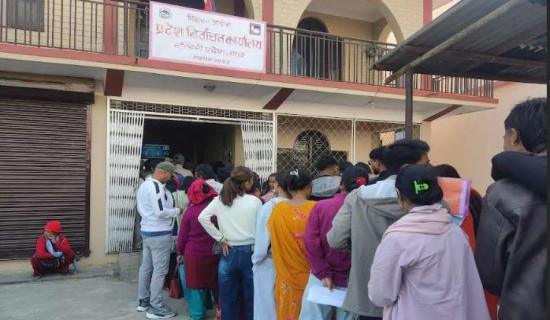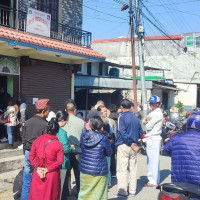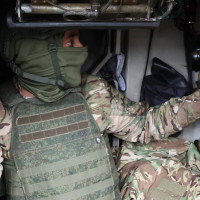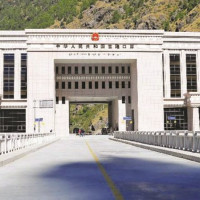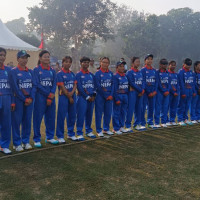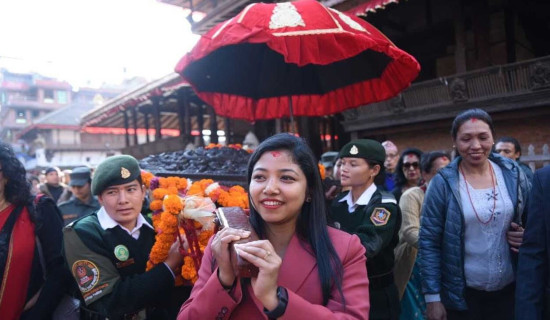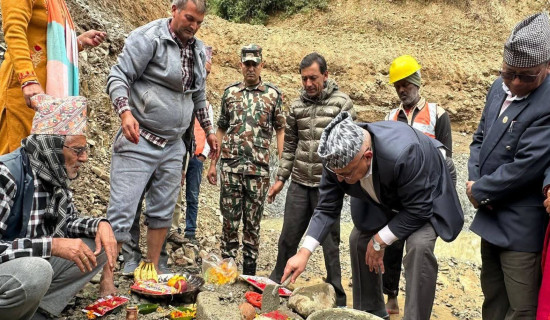- Sunday, 23 November 2025
A bullet-riddled house stands as a reminder of civil war
Beirut, Apr. 14: It was an ordinary day in Beirut. In one part of Lebanon's capital, a church was inaugurated, with the leader of the Christian Phalange party there. In another, Palestinian factions held a military parade.
Phalangists and Palestinians had clashed, again, that morning. What happened next on April 13, 1975, would change the course of Lebanon, plunging it into 15 years of civil war.
It would kill about 150,000 people, leave 17,000 missing and lead to foreign intervention. Beirut became synonymous with snipers, kidnappings and car bombs.
Lebanon has never fully grappled with the war's legacy, and in many ways it has never fully recovered, 50 years later. The government on Sunday will mark the anniversary with a minute of silence.
Unrest had been brewing. Palestinian militants had begun launching attacks against Israel from Lebanese territory.
Leftist groups and many Muslims in Lebanon sympathized with the Palestinian cause. Christians and some other groups saw the Palestinian militants as a threat. At the time, Mohammad Othman was 16, a Palestinian refugee in the Tel al-Zaatar camp east of Beirut.
Three buses had left camp that morning, carrying students like him as well as militants from a coalition of hardline factions that had broken away from the Palestinian Liberation Organization.
They passed through the Ein Rummaneh neighborhood without incident and joined the military parade.
The buses were supposed to return together, but some participants were tired after marching and wanted to go back early. They hired a small bus from the street, Othman said. Thirty-three people packed in.
They were unaware that earlier that day, small clashes had broken out between Palestinians and Phalange Party members guarding the church in Ein Rummaneh. A bodyguard for party leader Pierre Gemayel had been killed.
Suddenly the road was blocked, and gunmen began shooting at the bus "from all sides," Othman recalled. Some passengers had guns they had carried in the parade, Othman said, but they were unable to draw them quickly in the crowded bus.
A camp neighbor fell dead on top of him. The man's 9-year-old son was also killed. Othman was shot in the shoulder.
"The shooting didn't stop for about 45 minutes until they thought everyone was dead," he said. Othman said paramedics who eventually arrived had a confrontation with armed men who tried to stop them from evacuating him.
Some Lebanese say the men who attacked the bus were responding to an assassination attempt against Gemayel by Palestinian militants. Others say the Phalangists had set up an ambush intended to spark a wider conflict.
Marwan Chahine, a Lebanese-French journalist who wrote a book about the events of April 13, 1975, said he believes both narratives are wrong.
Chahine said he found no evidence of an attempt to kill Gemayel, who had left the church by the time his bodyguard was shot.
And he said the attack on the bus appeared to be more a matter of trigger-happy young men than a "planned operation."(AP)



